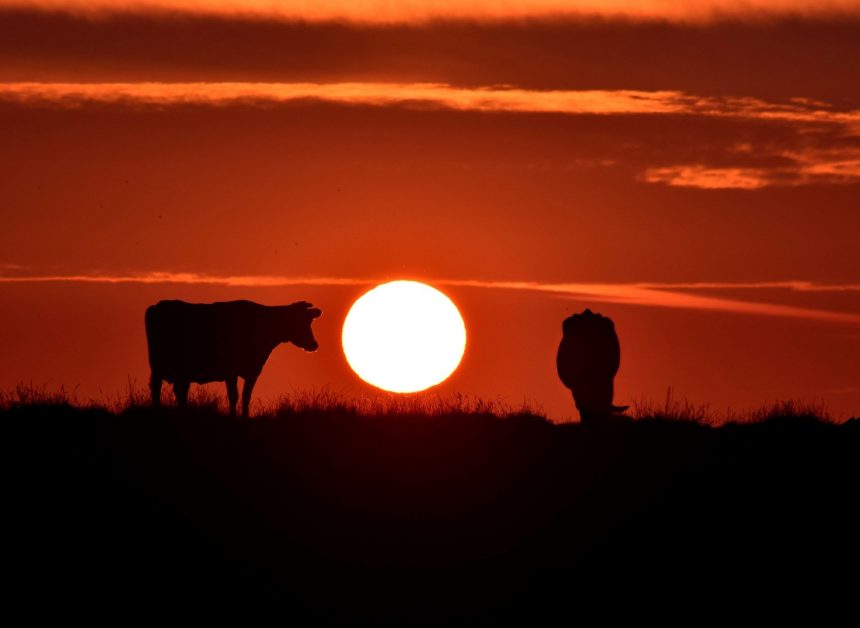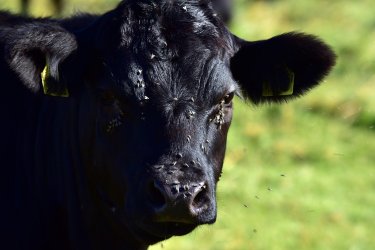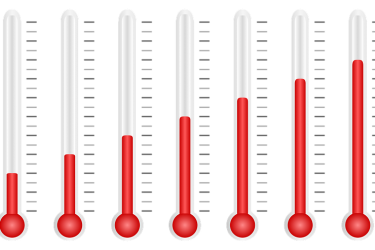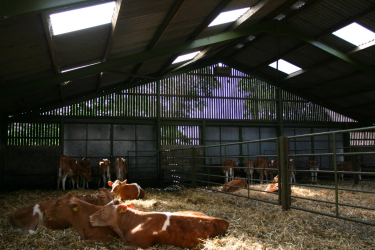With scorching temperatures in the UK right now, the risk of heat stress in cattle is significant. Heat stress can dramatically effect milk yield, but more concerning is the effect on fertility and reproduction. Minimising the risk of heat stress should be viewed as a priority; here are some tips on how to do so.
Cows who are exposed to a temperature of 22 degrees and 50 % humidity for 4 hours, will lose a litre of milk with even greater impact at higher temperatures. Multiply that by the whole herd and you could see a significant decline, especially during long periods of heat.
Key tips to implement now
- Provide plenty of clean water. 15 litres per hour intake is common so allow trough space for 20 cows to drink simultaneously, adding extra troughs if necessary. Although this may seem costly, the benefits of adequately hydrating cows is well worth the extra effort financially. Additional temporary troughs can also work during extreme heat.
- Have you considered housing cows during the day and turning out at night? If this isn’t possible graze fields with shade but be aware of keeping cattle activity to a minimum, and try to avoid the field furthest from the parlour.
- Avoid overcrowding in collecting yards and barns – having digital Thermo-Hygrometer measuring temperature and humidity up in sheds and parlours is a good idea, but training staff on identifying and mitigating heat stress is vital. Our Farm consultants can advise on staff training and development, more about this in our blog Grow your people, not just your business – Promar International (promar-international.com)
Feeding cows in hot weather
4. Do you notice you eat less when it’s really hot? Well cows are no different, but they are likely to feel heat stress at lower temperatures than people. The upper critical level where feed intake reduces is 22 degrees. The knock-on effect of a cow consuming less food will impact both milk yield and fertility, but adapting the feeding regime during hot weather can help to mitigate these problems. Feed partial TMR (Total mixed ration) early morning, evening or overnight. Increasing some nutrients in the TMR is likely to be necessary to satisfy nutritional requirements. Reducing low quality forage is sensible to reduce the heat produced from digestion.
A few key feeding tips:
Increase NDF (Neutral detergent fibre) to 31-34%
Increase Potassium to 1.5% using Potassium carbonate
Increase Sodium to 0.5% using sodium bicarbonate
Increase Magnesium to 0.35%
How to cool down cows
5. Just spraying cows with water is not enough – you must consider the combined effect of water, air velocity and time. For example, you could use Sprinklers above the feed line, 3 litres of water per minute, fans as low as possible, velocity <8km/hr. If you soak cows in collecting yard, remember there must be adequate air movement to allow for evaporation.
As Climate change is causing increased global temperatures, extreme heat during the summer is likely to become the norm. Cow shed ventilation and fans need to be properly designed for maximum effect. But if you are adding in fans as a temporary measure, be sure to review the power supply to the farm, as it may require upgrading.
If in any doubt, call our team of farm consultants to discuss a suitable feed ration and other management practices to reduce the impact of heat stress. Contact Us – Promar International (promar-international.com)








